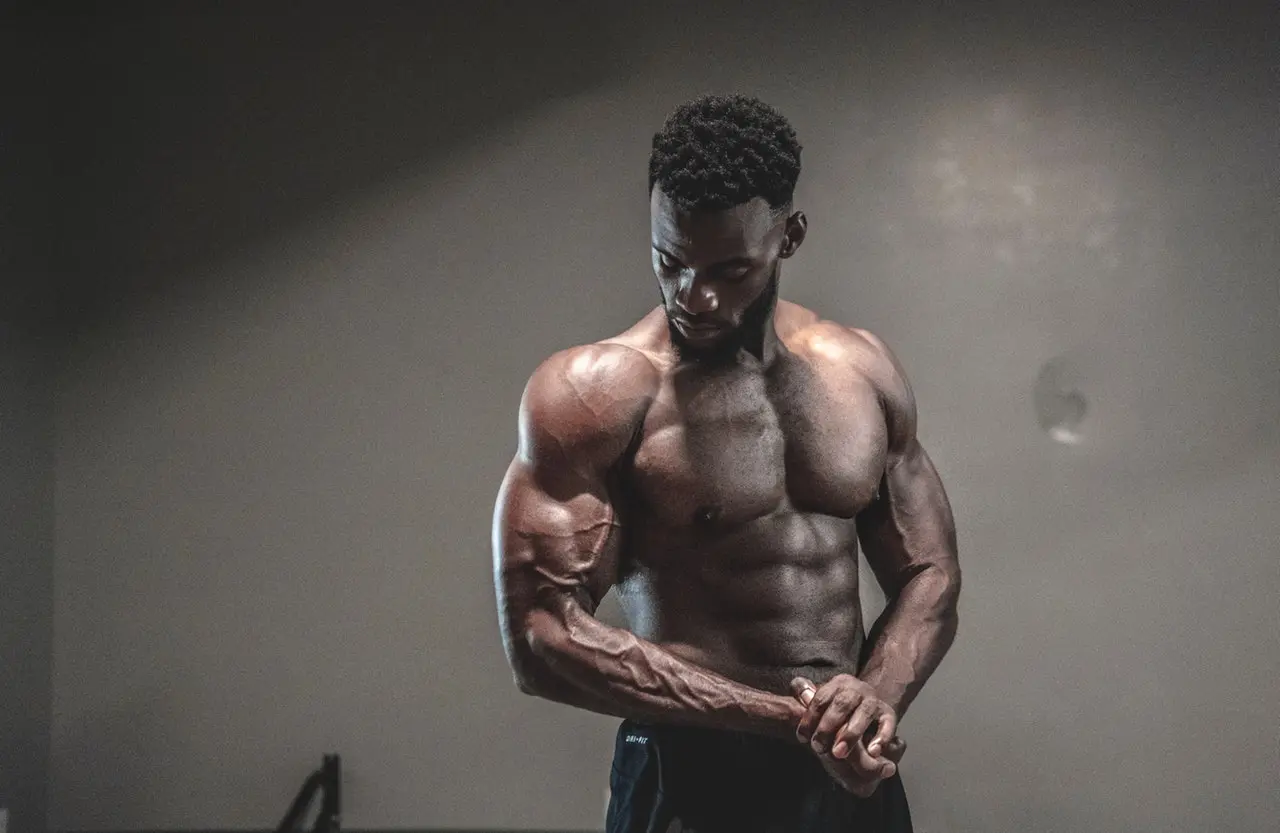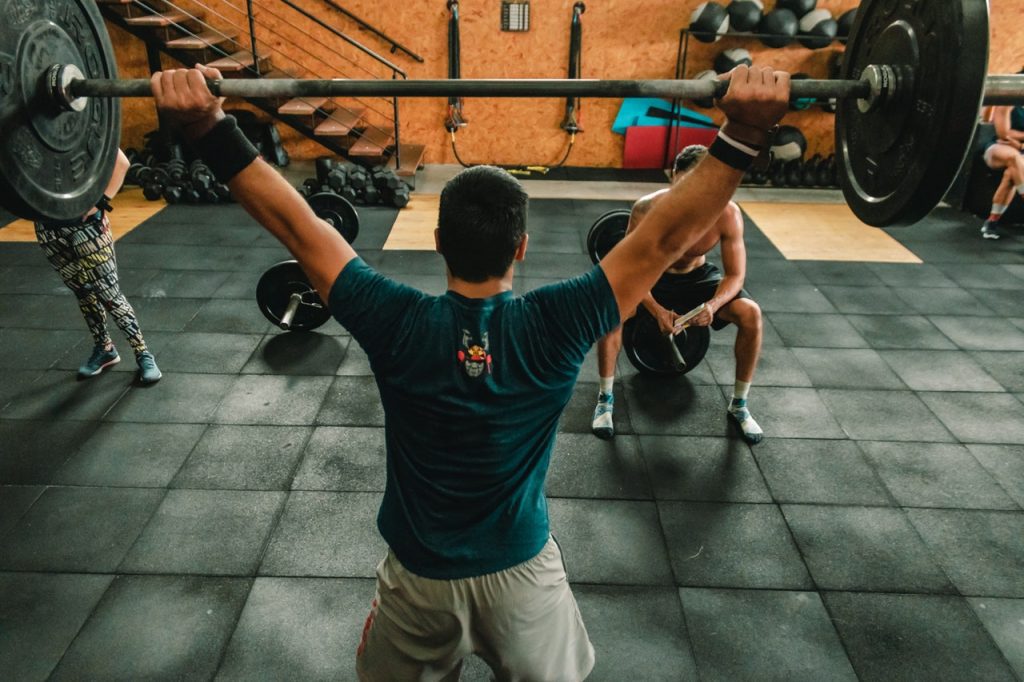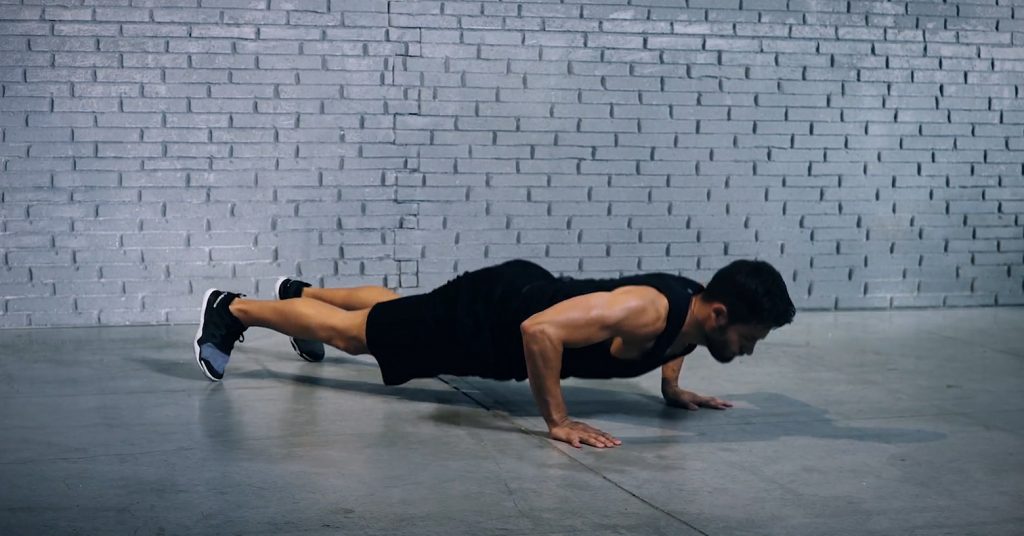
The best online fitness resource you'll ever need. We filter out the BS to ensure you meet your health and fitness goals!

The best online fitness resource you'll ever need. We filter out the BS to ensure you meet your health and fitness goals!

If you want that v-taper that bodybuilders and physique competitors look out for, or if you just want a strong, well-rounded upper body, then you will need strong anterior deltoids.
But how do you train them, and how much should you be looking to load them?
Your deltoid muscles are the three muscles of your shoulder. They are responsible for lifting and rotating your arms, among other things. The anterior deltoid is the front muscle in this group and is often the most visible of the three.
The anterior deltoid is the muscle that is primarily responsible for abduction, flexion and internal rotation: it helps you to raise your arms in front of your body and allows you to turn your shoulders inwards. It is also a major component in chest exercises: it plays heavily into your bench press, as we will go into in more detail below.
Working your anterior deltoids in the gym means placing them under load throughout their full range of motion, using weights as you perform every action the anterior deltoid is intended to do. There are many exercises that can accomplish this: below, we’ve listed four of the top ones for ultimate shoulder development.
Getting the overhead press right takes years of practice. Even those who are pretty decent at it within a few months of beginning their training won’t be anywhere near expert level for a decade or so. However, the process of getting it right will build a great deal of upper body strength, with particular emphasis on your anterior deltoids as a prime mover.
To perform the overhead press:
Seated Arnold presses are a variation on the overhead press that work through a fuller range of motion for your shoulder joint. They make use of a simple twist in the dumbbells’ movement to really brings your delts into play.
They work well as assistance exercises to any upper body movement.
If you are performing them heavy, do them as the main exercise at the beginning of your workout. For lighter reps, use them as assistance finishers after an overhead or bench press variant.
To perform the Arnold press:
Seated military presses are another version of the overhead press. They take out any leg drive, meaning that your upper torso, particularly your delts and triceps, are doing all of the work. You will be able to move far less weight than with a conventional overhead press, but the pressure going into your shoulders will lead to great hypertrophy and strength gains.
Keep a narrow grip on the bar if using a barbell. If using dumbbells, keep them only just outside shoulder width apart. This will use more of the anterior delt head than a wider grip.
To perform a seated military press:
Front arm raises are an isolation exercise that put the focus almost solely on the front deltoids. They are good as finishers in any shoulder workout and will bring on a tremendous pump and muscle burn. They are best performed with cables, though dumbbells or even kettlebells also work well.
Low weights and high reps are best for front arm raises.
To perform front arm raises:
Be cautious of overtraining your anterior deltoids
Your anterior deltoids carry a great deal of strain, both in your daily life and as secondary movers and tertiary supporters in many exercises. They generally come under more load, more often, than your other two deltoid heads.
Anterior deltoids are primary movers in exercises like overhead presses and front raises (as above.) However, most powerlifters and bodybuilders have an overhead press/shoulder day as well as a bench press/chest day each and every week.
As mentioned above, your anterior deltoids play a large role in bench pressing. This is part of the reason you will want them to be well-developed. It is also, however, part of the reason you may want to chill out a little in your training of them.
If you’re benching, dipping and pressing often during your training, you run the risk of overtraining your anterior delts. This will lead to them burning out, which will affect your pressing abilities over time. It will also lead to their overdevelopment. Your shoulders will then curve inwards, leading to chest and upper back issues over time and throwing your posture completely out of line.
There are a few things to bear in mind in order to limit any overtraining effect.

If you like to do a press/pull split, you may find yourself working overhead and chest presses in the same workout. You will typically begin with chest, then go into shoulder work. If you hit any more than eight sets for your chest (bench press variations, dips and so forth) then try for fewer than four sets of shoulder presses (or anything that will use your anterior delts.) This will spare them from taking on too much time under tension.
Of course, this is very rough and ready- the numbers won’t be the same for every person or every program- but it’s a decent enough rule of thumb.
If you hit a split, working your chest one day and your shoulders another, there are a couple of things you can do. Firstly, don’t train on consecutive days. Try to leave 2-3 days between training one and the other. Secondly, try to include plenty of shoulder exercises that use your other two deltoid heads. Dumbbell presses and lateral raises work the middle delts whilst any type of row, particularly high rows like face pulls, work your rear delts well.
This will keep you healthy and balanced, and will ultimately lead to a more aesthetic, more triangular physique.
As we use our anterior deltoids so much during everyday life and in many exercises in the gym, they can become very tight. Their overdevelopment can bring your shoulder joint slightly out of alignment, leading to a hunched upper back and a great deal of soreness.
It is therefore vital to stretch them out regularly. You will want to stretch them out at least before and after every upper body session, if not almost daily.
Stretching out before training is best done dynamically. You will be able to work through the full range of motion, opening the joint, whilst increasing local vascularity, filling the muscles and soft tissue with blood. This will result in a lowered risk of injury as well as improved performance in any movement using the shoulder joint.

Windmills are a perfect stretch for your full shoulder joint. Band pull-aparts work as a great antagonist stretch for the anterior joint, whilst light pressing (bare bar presses and push ups) will warm them up, stretch them through their full range of motion, release synovial fluid through the joint and improve that vascularity.
Static stretching post-workout will help to unbunch the muscles that have been tightened through training.
Try placing your hand on a wall slightly lower than your shoulder. Turn your body away from the arm, keeping your hand in place on the wall. You should feel the stretch beginning in your anterior deltoid and across your pecs.
Alternatively, sit or stand upright and clasp your hands behind your back, palms together and fingers interlaced. Bring your hands up slightly, away from your lower back, until you feel a light stretch in the front of your shoulder.
Following the advice in this article will allow you to train your anterior deltoids for greater performance and increased hypertrophy, leading ultimately to a stronger, more aesthetic upper body. Doing so should also keep you healthy, balanced and safe as you train, so that there will be few setbacks as you progress on your lifting journey.